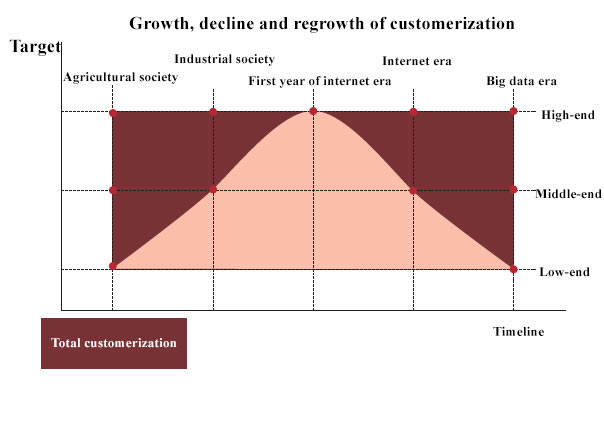

 |
|
[Source: Fortune Character Institute, translated by chinadaily.com.cn] |
Customerization sector witnessed an unprecedented development in 2015, with 4,000 such brands in existence, outnumbering traditional luxury brands 20 to 1, according to Zhou. Forty percent of these custom brands have a history of 10 years and 40 percent have a history of less than three years.
High-end customerization, at an yearly revenue of $50 billion, has taken up a 20 percent share of the whole luxury market. She added that garments and pearls are the main items for customerization and predicted that the market share of custom brands might peak at 50 percent.
"Everything could be custom-made in the future", Zhou said.
However, back to the Ju Feifei's digital customerization model, investors tend to be cautious.
Wei Xu, a VR industry investment manager with Hejun Capital, said application of VR in traditional industries is becoming a trend, but for the individual case, scaling up of offline custom-made stores are still in doubt.
"One single store's success cannot guarantee another". "New technologies can lower costs but those who customerize their clothes are not sensitive to prices, but it takes time for them to be willing to use new technologies."
"VR technologies can change the whole process of garment manufacturing, sales and purchasing in the future, creating a customer-to-manufacturing model but this tremendous change might take place online, rather than offline," she said.
Ju admitted that her second entrepreneurial move might not be easy but she plans to connect all the key points of this model in one year.